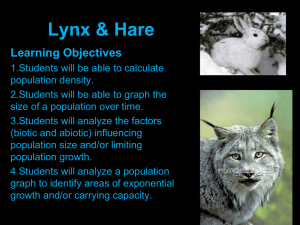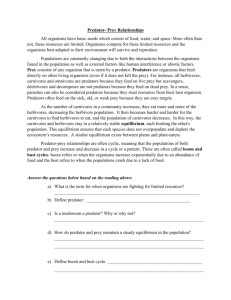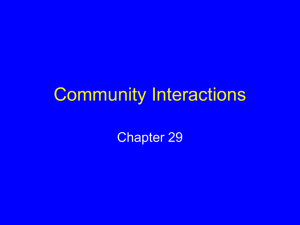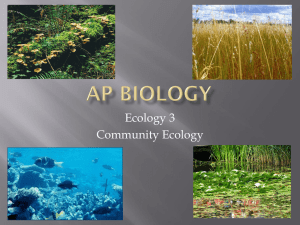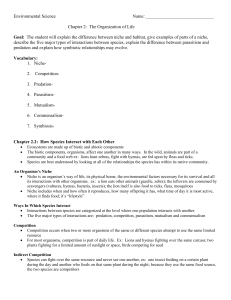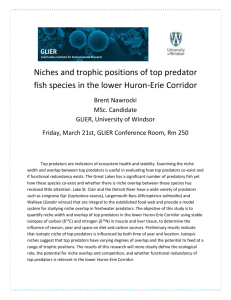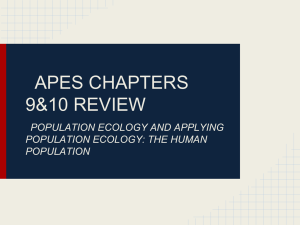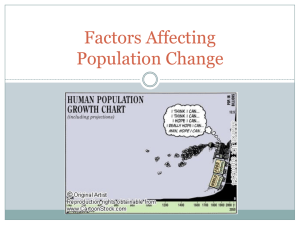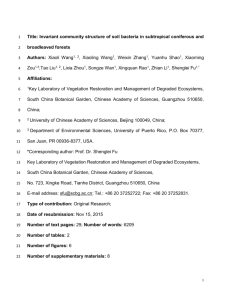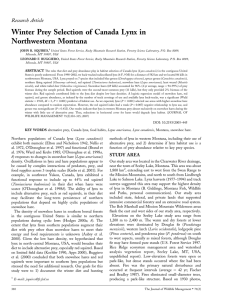Population Interactions
advertisement
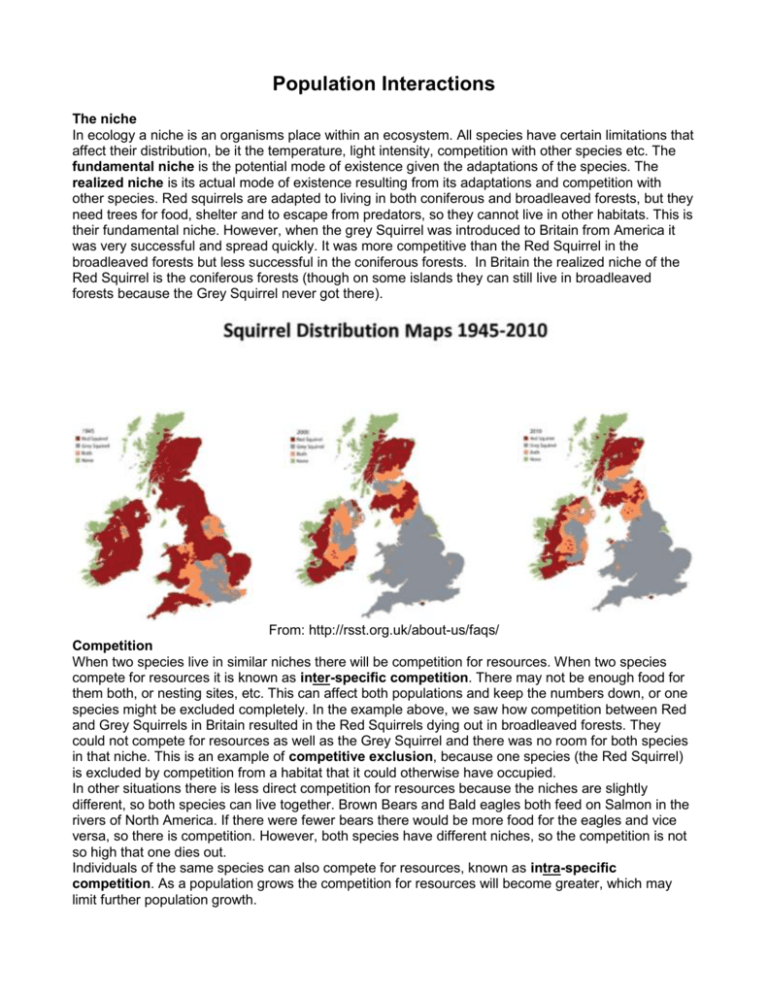
Population Interactions The niche In ecology a niche is an organisms place within an ecosystem. All species have certain limitations that affect their distribution, be it the temperature, light intensity, competition with other species etc. The fundamental niche is the potential mode of existence given the adaptations of the species. The realized niche is its actual mode of existence resulting from its adaptations and competition with other species. Red squirrels are adapted to living in both coniferous and broadleaved forests, but they need trees for food, shelter and to escape from predators, so they cannot live in other habitats. This is their fundamental niche. However, when the grey Squirrel was introduced to Britain from America it was very successful and spread quickly. It was more competitive than the Red Squirrel in the broadleaved forests but less successful in the coniferous forests. In Britain the realized niche of the Red Squirrel is the coniferous forests (though on some islands they can still live in broadleaved forests because the Grey Squirrel never got there). From: http://rsst.org.uk/about-us/faqs/ Competition When two species live in similar niches there will be competition for resources. When two species compete for resources it is known as inter-specific competition. There may not be enough food for them both, or nesting sites, etc. This can affect both populations and keep the numbers down, or one species might be excluded completely. In the example above, we saw how competition between Red and Grey Squirrels in Britain resulted in the Red Squirrels dying out in broadleaved forests. They could not compete for resources as well as the Grey Squirrel and there was no room for both species in that niche. This is an example of competitive exclusion, because one species (the Red Squirrel) is excluded by competition from a habitat that it could otherwise have occupied. In other situations there is less direct competition for resources because the niches are slightly different, so both species can live together. Brown Bears and Bald eagles both feed on Salmon in the rivers of North America. If there were fewer bears there would be more food for the eagles and vice versa, so there is competition. However, both species have different niches, so the competition is not so high that one dies out. Individuals of the same species can also compete for resources, known as intra-specific competition. As a population grows the competition for resources will become greater, which may limit further population growth. Herbivory Herbivores feed on plants, so can affect the plant populations. Overgrazing in Mongolia is an example of this, with the vegetation on the steppe being much shorter than what it would be naturally. Overgrazing also affects the type of species growing, as some species are more able to survive such grazing pressure than others. Equally the availability of plants determines the herbivore population feeding on it. In East Africa the famous migration of the wildebeests is due to the different growth of plant species in different areas at different times. Predation As with the relationship above between herbivores and plants, there is a relationship between predators and their prey. Worldwide, there has been a general decline in the populations of top carnivores (such as tigers, lions wolves etc), resulting in changes in the populations of many prey species and the increase in the populations of many smaller carnivores. In tropical Africa Lions and Leopards have declined, so other predators (such as baboons) have filled the gap and become more common. Where there is a close link between one predator species and one prey species (such as the Lynx and the Snowshoe Hare in Canada) we often have a classic predator prey cycle (see diagram below). If the hare population goes up there is more food for the lynx, so within a few years the lynx population is higher. This results in more hares being eaten, so the hare population drops very quickly. The fall in the hare population causes a massive reduction in the lynx population. For the next few years (while the lynx population recovers) the hares do extremely well and the population increases rapidly, resulting in the lynx population rising, etc. From: https://missbakersbiologyclasswiki Parasitism A parasite does not kill and consume its prey, like a predator, but it gets nourishment from its host and usually causes it some harm. See examples below. Tapeworms live in the intestines of humans and many other species. They have suckers and hooks on the head to attach to intestine wall and they absorb nutrients from the food eaten by the host. Humans and pigs are both parasitized by the same type of tapeworm. Humans mostly get tapeworms from eating pork that has not been cooked properly. From: http://2.bp.blogspot.com Elephantiasis is caused by a number of different parasitic worms that are transmitted by mosquitoes. The worms live in the lymphatic system where they block vessels, causing a build-up of lymph. It causes a thickening of the skin and underlying tissue resulting in gross malformations of the body. From: http://www.buzzoff.org Mutualism This is where two species gain benefit from associating together (see examples below). Hermit crabs do not have their own shells, but live in the old shells of other species. They often have a sea anemone attached to the shell. The anemone has stinging tentacles that help to defend the crab from attack by predators. The anemone gains as well because when the crab feeds it produces lots of bits of food for the anemone to take from the water. When the crab grows it needs to find a new shell. When it moves to a new shell it takes its anemone with it. from: http://media.photobucket.com Cleaner fish get food by removing parasites from bigger fish and they will even enter the mouth of predators (such as the eel above) to get food stuck in the teeth. The cleaner fish benefits by getting free food. The larger fish benefits by getting cleaned and will not eat the cleaner fish, even when it goes into its mouth. From: http://www.islandive.com
